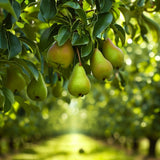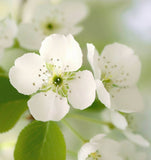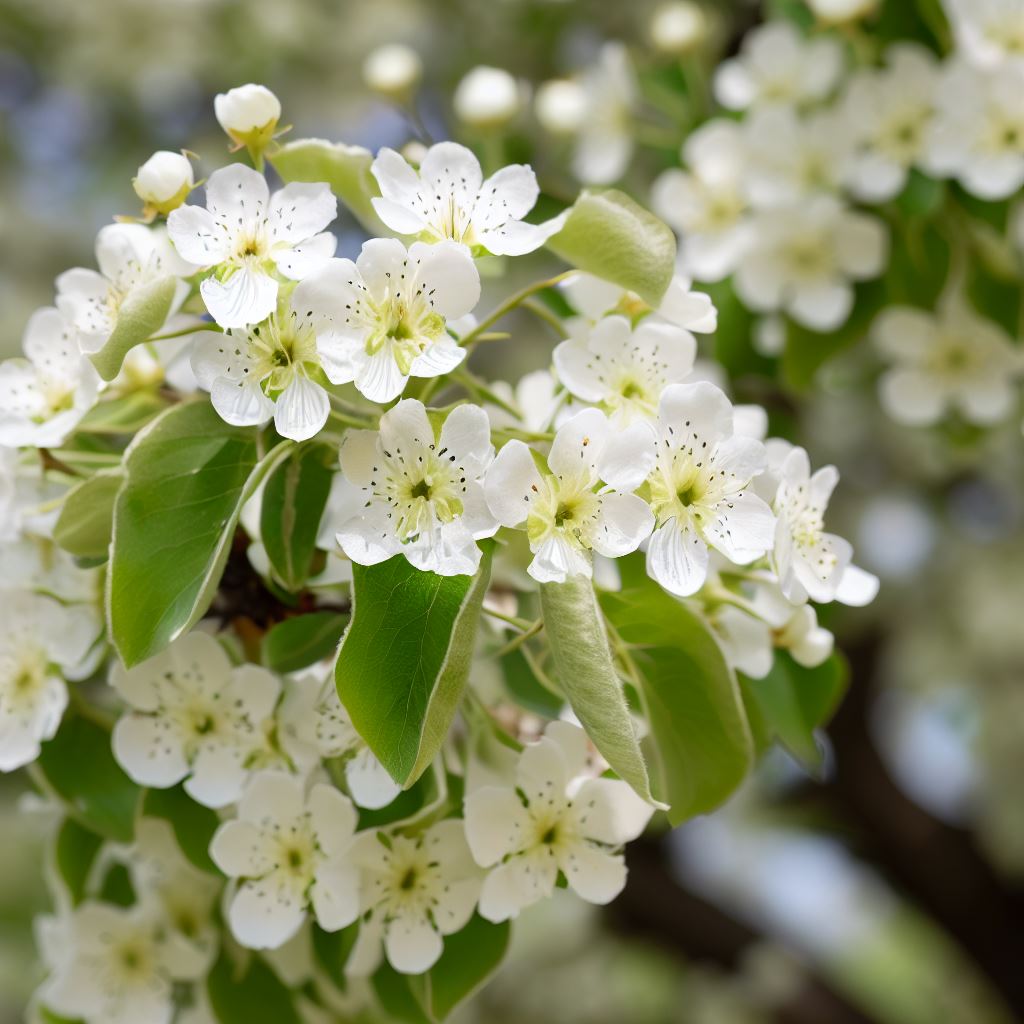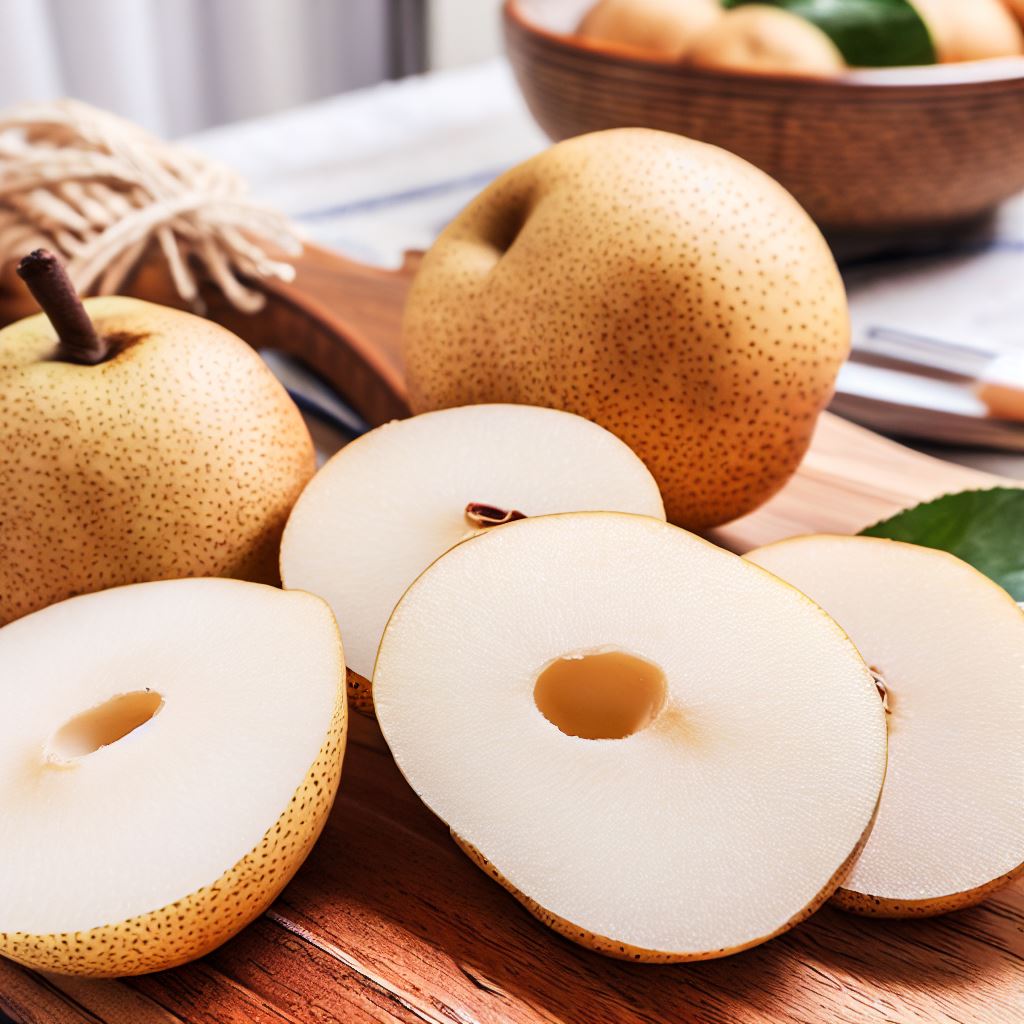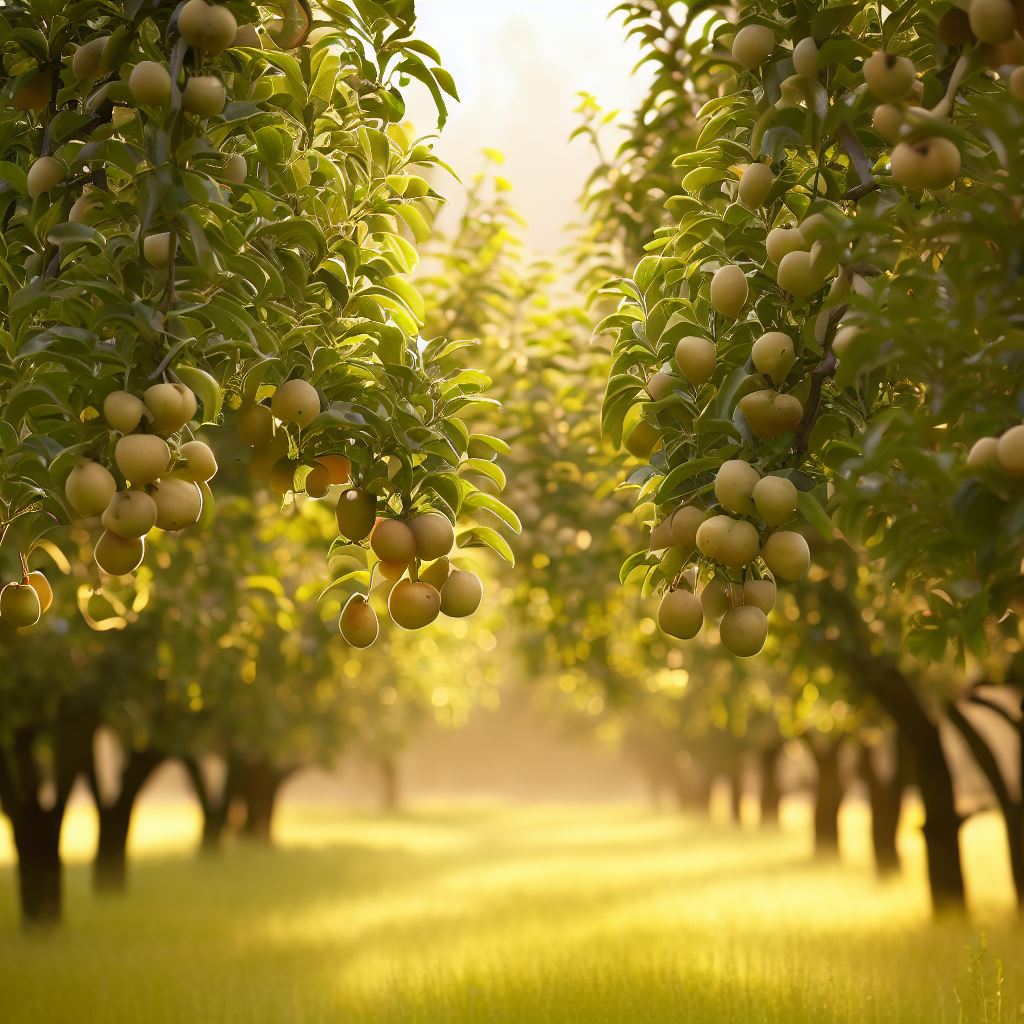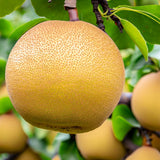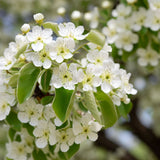Pyrus pyrifolia (Asian Pear, Chinese Sand Pear, Japanese Pear, Sand Pear)
Pyrus pyrifolia (Asian Pear, Chinese Sand Pear, Japanese Pear, Sand Pear) is a species of pear tree native to East Asia, including China, Japan, and Korea. It is a fruit-bearing tree that is cultivated for its unique and distinctively shaped pears.
Tree Appearance: The Chinese sand pear is a deciduous tree that typically reaches a height of 15 to 30 feet (4.5 to 9 meters) when mature. It has a rounded or broadly pyramidal canopy, with dark green, oval-shaped leaves that are often glossy and alternate along the branches.
Fruit: The fruit of the Chinese sand pear is the most notable feature of the tree. The pears are medium to large in size, with a distinctive round or apple-like shape. Their skin is usually yellow-green, but it can vary in color, and it may develop brown russeting or spots. The flesh of the fruit is crisp and grainy, with a sweet and mildly tangy flavor. It is often eaten fresh, but it can also be used for cooking, baking, or canning.
Flowering and Fruit Production: Chinese sand pear trees typically bloom with small, white to creamy-white flowers in the spring, which are pollinated by insects. The fruit typically matures and is ready for harvest in late summer to early fall, depending on the climate.
Cultivation: Chinese sand pear trees are hardy and adaptable to a range of soil types. They thrive in well-drained soil and require full sun for optimal fruit production. They are known for their resistance to various pests and diseases, making them relatively low-maintenance trees.
Culinary Uses: Chinese sand pears are enjoyed fresh, as they have a unique and pleasant texture and flavor. They can also be used in various culinary applications, including salads, desserts, preserves, and as a flavoring in some Asian dishes.
Ornamental Value: In addition to their fruit production, Chinese sand pear trees are sometimes cultivated for their ornamental value, as they produce attractive white blossoms in the spring.
It's worth noting that the Chinese sand pear is just one of many pear species and varieties. Chinese sand pears have been cultivated for centuries and continue to be a popular fruit in various parts of Asia and beyond.
Botanical Name : Pyrus pyrifolia
Common Name : Asian Pear, Chinese Sand Pear, Japanese Pear, Sand Pear
Height : 15-30 ft
Spread : 10-15 ft
Germination Info : Seed requires 90 days cold moist stratification
Hardiness zone : 6 and UP
Average seed per ounce : Approx. 680

